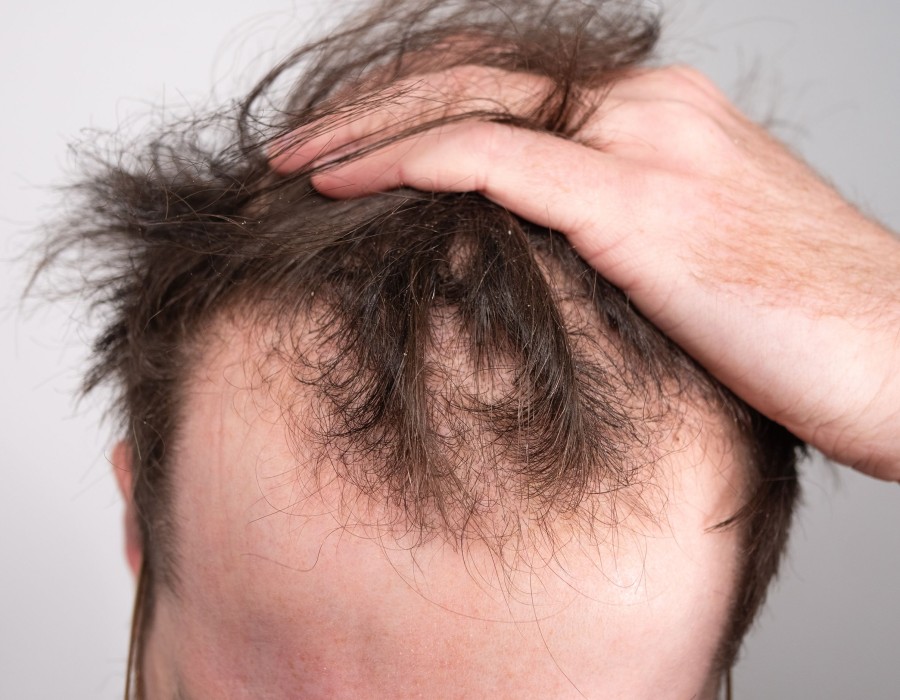Pattern baldness, medically known as androgenetic alopecia, is the most common form of hair loss affecting both men and women. It is primarily caused by genetics and hormonal changes, especially the sensitivity of hair follicles to dihydrotestosterone (DHT). Men typically experience receding hairlines and bald spots, while women notice general thinning across the crown. Because the condition is progressive and hereditary, many wonder whether a Hair Transplant in Dubai can truly make a difference.
The Science Behind Hair Loss Treatments
Modern hair loss treatments target the root cause of androgenetic alopecia: follicle miniaturization due to DHT sensitivity. When DHT binds to susceptible follicles, it causes them to shrink over time, producing thinner, weaker hair until growth stops completely. Effective treatments work by either reducing DHT levels, stimulating new follicle activity, or restoring lost hair through advanced techniques.
Non-Surgical Treatments for Pattern Baldness
These medications do not cure baldness but can significantly slow progression and stimulate regrowth in thinning areas.
Platelet-Rich Plasma (PRP) Therapy
PRP therapy is a regenerative treatment that uses the patient’s own blood. The plasma, rich in growth factors, is injected into the scalp to stimulate dormant follicles and improve hair density. It’s a popular option for those in the early to moderate stages of pattern baldness, enhancing both thickness and hair quality.
Low-Level Laser Therapy (LLLT)
Laser therapy uses light energy to increase blood circulation and cell activity in the scalp. It strengthens existing follicles and can be used alongside other treatments to amplify results. LLLT is non-invasive, pain-free, and ideal for long-term maintenance.
Hair Transplant for Advanced Pattern Baldness
When hair loss has progressed significantly, non-surgical methods may not be enough. In these cases, Hair Transplant in Dubai offers a permanent and natural solution. This procedure involves relocating healthy, DHT-resistant follicles from the donor area (usually the back or sides of the head) to balding regions.
Popular Techniques:
- Follicular Unit Extraction (FUE): Individual hair follicles are transplanted with precision, leaving minimal scarring and ensuring a natural look.
- Follicular Unit Transplantation (FUT): A strip of scalp is removed and divided into grafts before transplantation, ideal for covering larger areas.
- Direct Hair Implantation (DHI): A refined method that allows for greater control over depth, direction, and density during implantation.
Since transplanted hair retains its DHT resistance, it continues to grow naturally and permanently in the new area.
How Effective Are These Treatments?
The effectiveness of hair loss treatments for pattern baldness depends on several factors, including the stage of baldness, age, genetics, and consistency in following treatment protocols. Early intervention often yields the best results, as treatments can preserve existing follicles and encourage regrowth before they become inactive.
- Mild to Moderate Baldness: Non-surgical treatments like PRP, Minoxidil, or LLLT can produce noticeable improvement in hair thickness and density.
- Advanced Baldness: Hair transplantation offers the most effective and lasting results, restoring natural hairlines and volume.
When combined strategically, these treatments can slow hair loss progression and enhance the success of surgical procedures.
Combination Therapy: The Key to Success
Many specialists recommend a combination approach to maximize effectiveness. For example:
- PRP sessions after a hair transplant improve graft survival and healing.
- Minoxidil and Finasteride can maintain and strengthen existing hair.
- Laser therapy supports follicle health and prolongs results.
This multi-therapy plan ensures both the prevention of further loss and stimulation of new growth.
How Dubai Leads in Hair Restoration
Dubai has become a hub for advanced hair restoration, offering cutting-edge technology and internationally trained specialists. Clinics in Dubai use innovative methods, including robotic hair transplantation and growth factor-enhanced PRP, to deliver superior outcomes. Personalized treatment plans are designed based on the patient’s scalp condition, type of hair loss, and aesthetic goals, ensuring each procedure achieves the most natural and lasting result.
Maintaining
Sustaining the benefits of hair loss treatment requires proper maintenance and care:
- Follow a balanced diet rich in biotin, iron, and protein.
- Avoid excessive heat styling or harsh chemical products.
- Stay consistent with prescribed medications or therapy sessions.
- Protect your scalp from prolonged sun exposure.
Regular follow-up with your hair restoration specialist ensures early detection of any recurrence or new thinning, allowing timely adjustments to the treatment plan.
Emotional and Psychological Benefits
Beyond restoring hair, successful treatment significantly boosts confidence and self-esteem. Patients often report improved social and professional interactions, as hair restoration provides not just a physical transformation but also emotional renewal.
Conclusion
So, do hair loss treatments actually work for pattern baldness? The answer is yes—when chosen correctly and performed by skilled professionals. While medications and regenerative therapies can slow or reverse early-stage baldness, surgical options like hair transplants provide a long-term, natural-looking solution for advanced cases. With modern techniques and comprehensive care available through Hair Transplant Dubai, individuals now have access to proven methods that restore not only their hair but also their confidence and quality of life.






Comments